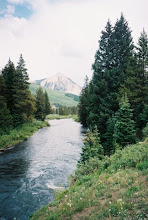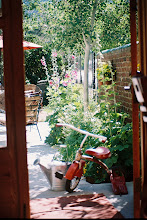The best kept secret in Colorado is the Arkansas River Valley. This valley is called the “Banana Belt” of Colorado. It sits basically in the middle of the state and lies between the Collegiate Peaks of the Sawatch Range on the West, and the Mosquito Range on the East. The southern border is the northern tip of the Sangre de Cristos and the Northern border is the highest city in North America, Leadville. Crested Butte is just across the Cottonwood Pass, west over the divide. Aspen is north-west about ninety miles and Breckenridge is ninety miles north east. The width of the valley is twenty five miles and the length is about fifty miles. This valley is sometimes called the Tri-peak region because of the signature three peaks of Mt. Princeton. Mt. Princeton is one of the Collegiate Peak mountain range of the Sawatch. This mountain is number 20 on the list of elevations. Its singular elevation is 14, 197 ft. To be ranked on this list, a peak must rise at least 300 feet above the saddle that connects it to the nearest 14er (if another exists nearby). This guideline has been in use in Colorado for some time. Most vacationers think Pikes Peak is the tallest peak. But in reality Pikes Peak, 14,100 ft., is number thirty out of fifty three peaks. The highest peak in Colorado sits right in the Arkansas River valley, just north of Mt. Princeton. This peak is Mt. Elbert who is 14,433 ft.; the tallest mountain in Colorado.
Because the valley is relatively small and narrow, is why it has such temperate weather. That is also why it has the nickname the Banana Belt. The winters are mild and the summers are perfect. This is one of the reasons why my husband and I bought a second home there. I am fortunate to be able to spend every summer there. My current primary job is teaching, and writing is secondary; although I hope to flip-flop that one day soon. Teaching is a great job. The best thing about teaching, no matter what any educator tells you, is summer off. There is no other job where you work hard for nine months and get three months off after that. If you have ever taught for any length of time, with summers off, you realize that you cannot return to a different job other than teaching.
I love seeing the “light bulb” moment when a student totally understands what you are teaching; when a student can complete a skill with proficiency because you were the one who taught them the skill. That is one of the reasons why teachers continue to stay in their profession. There are a lot of stressors on educators now.
All students must pass the standardized test, parents are demanding, and the paper work on the computer is unending. But the honest truth of why teachers continue with teaching is summers off. Educators are liberated at the end of May to play carefree until sometime in August. I don’t know who looks forward to summer more, the students or the teachers. This unbounded time allows for teachers to recoup time with family, learn new classroom concepts, or just to languish around in the lazy days of summer.
I am fortunate enough to be able to spend the entire summer in Colorado. The John Denver songs that speak of his love of the Rocky Mountains, the high you get from the flowers, and rain of fire in the sky, the rocky cathedrals that reach to the sky, are all some of the very same reasons why I love the mountains. Most people, unless they are mountain lovers, don’t really understand the lure of the high country. When we say high country, we mean that we want to have our feet on terra-firma, at 10,000ft. or more. I want to feel like I am at one with the mountains.
Their poly-colored majesty gives a great sense of security and uncharacteristic peace. All of life here is a much slower pace and the favorite quote is “No worries”. There is no time in the lives of the Colorado natives for impatience or rudeness. It does not take long for the fast paced chaos of the city to wear down to a much slower, peaceful long yawn.
Being an author is an unexpected talent I have found. Writing takes a lot more emotional work than anyone can imagine.
I recently saw an interview with J. K. Rowling, the author of the Harry Potter series. She confessed that she cried while writing several of her dramatic scenes in her Harry Potter books. She was literally crying over imaginary characters that she had transformed into emotional friends. This is real writer’s passion; the personal, inner drive to put a story into words on a piece of paper. A work that, until you experience it; one does not understand. “Lay people”, not in the writing world, do not comprehend the overwhelming energy and naked emotion that is required to be an author.
I am convinced that, that naked emotion is a reason why many authors feel more inspired and comfortable writing at night. They can hide from the world the fact that their writing emotions run the gamut with them in their creative modes. How foolish we must look, hunched over our keyboards, typing as fast as we can and wiping the tears from our faces during incredibly creative midnight manias. Only in the dark, do we feel safe from outside scrutiny, and feel free to weep and bare our emotional writing talents to share with others. In the dark of night, solitary and alone, a writer expels words that cause crying and laughter; a lot of pushing and cajoling, pain and concentration. A new literary baby is finally given birth to, and sprouted wings, only to be shared with the world.
I have always been an avid reader. My parents were not ones to read books to us at night, nor were they role models of reading anything but the newspaper. I am one of the many who learned to love to read as an escape.
I always wondered “escape from what”? I personally was escaping from a very mentally ill, delusional, bi-polar mother. I found security and comfort in my room alone with a book. Reading, now, for me though is a daily activity. Brush my teeth, fix my hair, work and cook dinner, read. My day is never complete unless I have spent some time reading.
Reading is an activity I truly love to do. Writing about the mountains is one of my other passions. This book was written for the Everyday Joe Hiker, though. There are a lot of what we call “die hard” hikers. These people are incredibly physically fit and don’t mind starting out on a hike at 500 AM so as to reach the summit of a peak that is over 14,000ft. tall. They are admirable. The everyday Joe Hiker is someone who loves to hike, but doesn’t want to end the experience on hands and knees scaling over rocky saddles. The Joes love the adventure, but don’t want to work too hard to achieve it. We are the ones who go to the gym around twice a week, at the most, and are just happy “being there”. We show up for the daily hike, wearing our Merrill’s hiking sandals, around 800 AM with our last cup of coffee in our hand and fully expect to be home in time for the start of happy hour. My best hiking buddy, Jazz, and I use our sandals as a barometer of whether we want to take on a certain hike or not. If the terrain is too treacherous for sandals, then we won’t take the hike. We wore the traditional hiking boots, with a double layer of socks for years. We found that after hiking in the summer for about three hours, all we could think of was taking our boots off at the next cold, clear water stream; which we did all the time. So we traded out boots for hiking sandals. Now we just wade right through the cold, refreshing water with out bare, red painted toes sticking out. No since in having to stop, unlace your boots and stick your feet in the water if you don’t have to. I hope you enjoy reading this book as much as I loved creating it.
Subscribe to:
Post Comments (Atom)



No comments:
Post a Comment